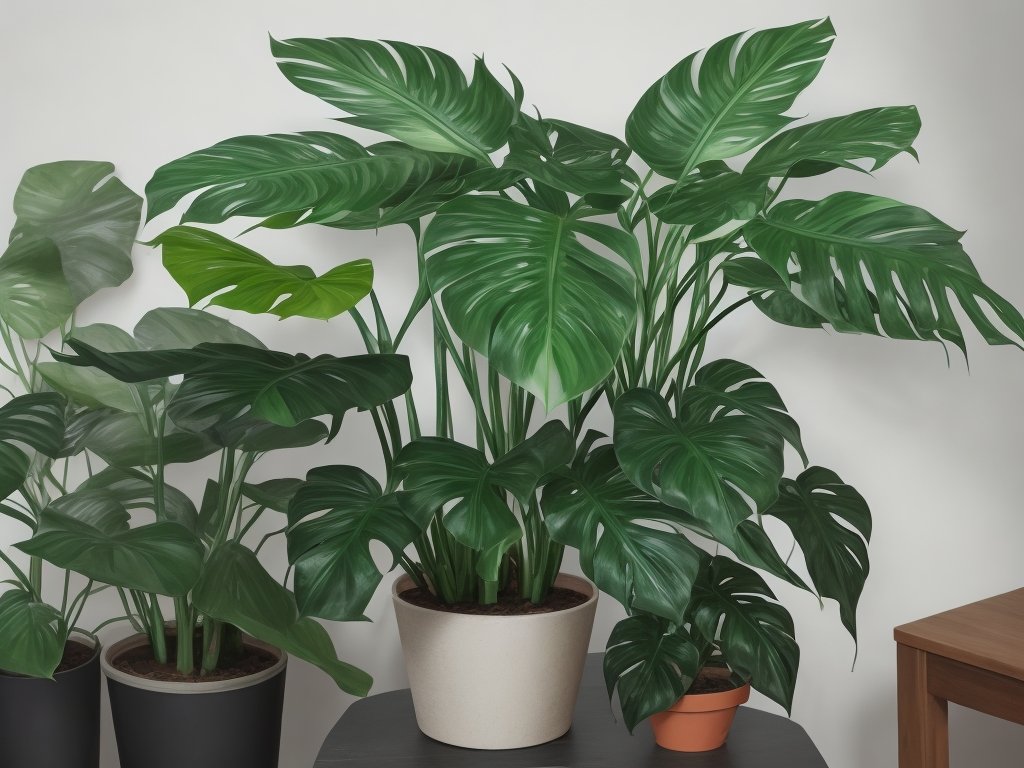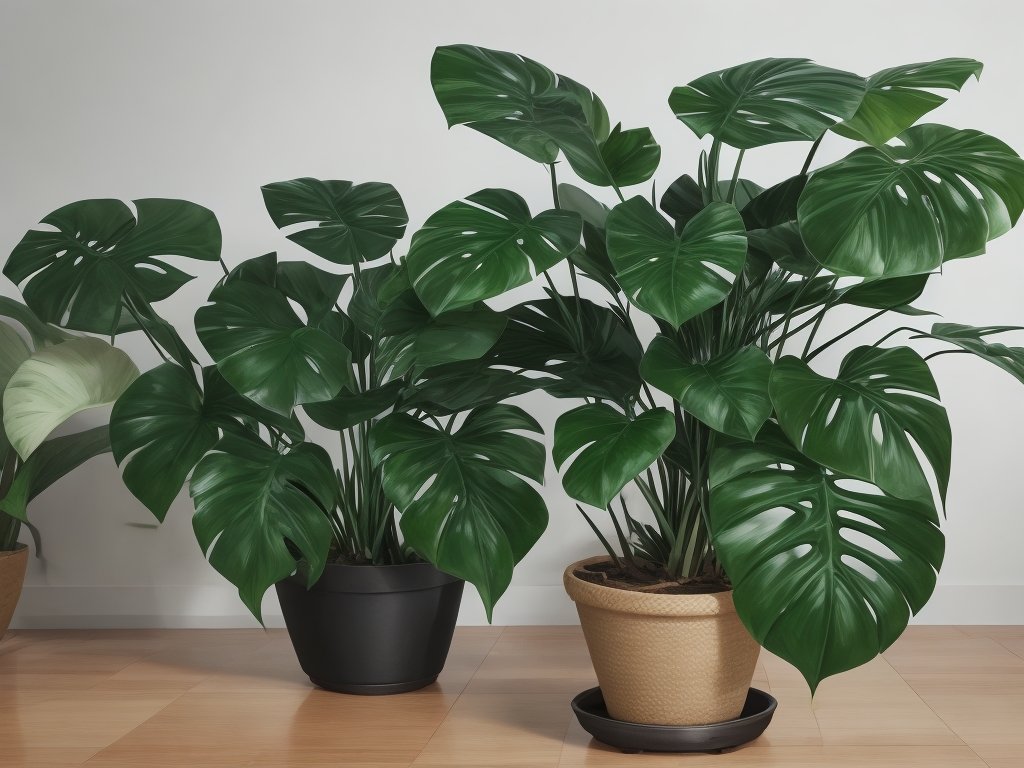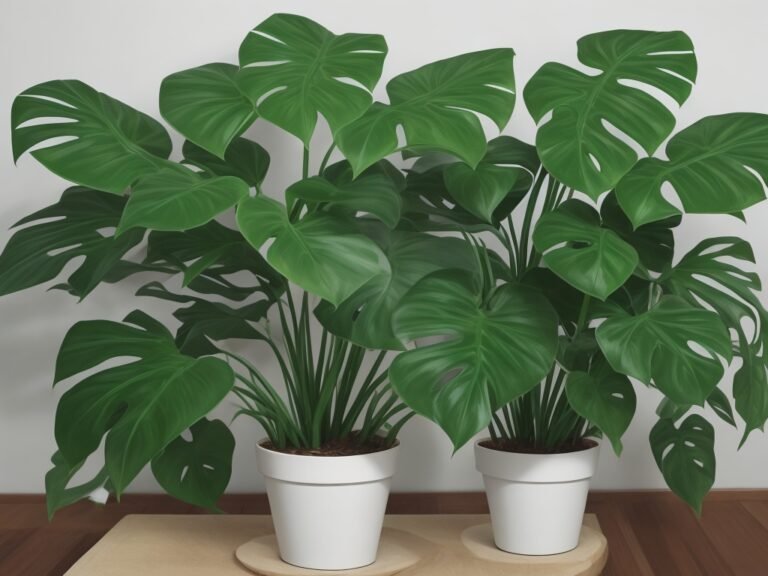Tips For Growing a Variegated Monstera Plant?
Key Takeaways:
- Variegated Monstera plants require plenty of bright but indirect sunlight to thrive.
- Proper watering and well-draining soil are key factors in preventing root rot in variegated Monstera plants.
- Regularly wiping the leaves with a damp cloth helps to keep the variegation vibrant and free from dust.
- Propagating variegated Monstera plants is possible through stem cuttings, but it is challenging to maintain the variegation in the new growth.
Are you ready to add a touch of exotic beauty to your indoor jungle? Look no further than the variegated Monstera plant! With its stunning green and white leaves, this plant is a head-turner.
But growing and caring for a variegated Monstera requires some extra attention and know-how.
That’s where I come in. In this article, I’ll share my expertise and guide you through all the tips and tricks you need to successfully nurture and grow your own variegated Monstera plant.
From choosing the right variety to providing ideal growing conditions, watering and fertilizing techniques, pruning and training, to preventing common issues, and even propagating—this comprehensive guide has got you covered.
Let’s dive in and turn your home into a tropical oasis!
| Tip | Description |
| 1 | Choose a well-lit spot with bright, indirect sunlight. Avoid direct sunlight as it can scorch the leaves. |
| 2 | Keep the soil consistently moist, but not soggy. Water the plant when the top inch of soil feels dry. |
| 3 | Use a balanced liquid fertilizer every 2-4 weeks during the growing season to promote healthy growth. |
| 4 | Avoid overwatering or letting the plant sit in water, as it can lead to root rot. Ensure proper drainage. |
| 5 | Rotate the plant every few weeks to encourage even growth and prevent it from leaning towards the light. |
| 6 | Clean the leaves regularly with a soft, damp cloth to remove dust and keep them free from pests. |
| 7 | Prune the plant selectively to maintain its shape and remove any damaged or yellowing leaves. |
| 8 | Consider repotting the plant every 1-2 years to refresh the soil and provide more room for growth. |
| 9 | Monitor the humidity levels around the plant and increase humidity if necessary by misting or using a humidifier. |
Choosing the Right Variegated Monstera Plant
To choose the right variegated Monstera plant, consider different varieties and factors that affect their growth.
Understanding Different Varieties of Variegated Monstera Plants
There are several different varieties of variegated Monstera plants, each with unique patterns and colors on their leaves.
Some popular varieties include the Monstera deliciosa Albo Variegata, which has white variegation, and the Monstera borsigiana Aurea, which has yellow variegation.
Other varieties may have different combinations of colors, such as green and white or green and yellow.
Each variety adds a unique touch to your collection and can be a beautiful addition to your indoor space.

Factors to Consider When Choosing a Variegated Monstera Plant
When choosing a variegated Monstera plant, there are a few factors to consider. First, look for a healthy plant with vibrant variegation.
Make sure the leaves aren’t wilted or damaged.
Second, consider the size of the plant and how it will fit in your space. Lastly, check the plant’s care requirements to ensure they align with your abilities and preferences.
Providing the Ideal Growing Conditions
To ensure optimal growth for your variegated Monstera plant, it’s important to provide the ideal growing conditions.
Optimal Temperature and Humidity Levels
The optimal temperature range for variegated Monstera plants is between 65-85°F (18-29°C).
They prefer warm, tropical temperatures, but can tolerate slightly cooler temperatures.
Maintaining a humidity level of 60-70% is ideal for these plants, as they naturally grow in humid rainforest environments.
Using a humidifier or placing the plant on a pebble tray filled with water can help increase humidity.
Selecting the Right Type of Soil
When selecting the right type of soil for your variegated Monstera plant, it’s important to choose a well-draining soil mix.
Look for a potting mix that is specifically formulated for tropical plants or a mixture of peat moss, perlite, and vermiculite.
Avoid heavy soils that retain too much moisture, as they can lead to root rot.
You can also add organic matter, such as compost, to improve the soil’s fertility and water-holding capacity.
And don’t forget to choose a pot with drainage holes to ensure excess water can escape.
Best Location for Your Variegated Monstera Plant
The best location for your variegated Monstera plant is a spot with bright, indirect light.
Avoid placing it in direct sunlight as it can scorch the leaves.
It’s also important to provide some humidity for the plant, so placing it in a bathroom or near a humidifier can be beneficial.
Watering and Fertilizing Tips
Proper watering and fertilizing are essential for the healthy growth of variegated Monstera plants. Choosing the right watering and fertilizing techniques can help maintain the vibrant colors and overall health of your variegated Monstera plant.
Proper Watering Techniques for Variegated Monstera Plants
Proper watering techniques are essential for the health of your variegated Monstera plants. Here are some tips:
- Check the soil moisture: Before watering, stick your finger about an inch deep into the soil. If it feels dry, it’s time to water. If it’s still moist, hold off on watering.
- Water thoroughly: When you do water, make sure to thoroughly saturate the soil until water drains out from the bottom of the pot. This ensures that the roots receive enough moisture.
- Avoid overwatering: Variegated Monstera plants are susceptible to root rot, so it’s important not to overwater them. Let the top inch of soil dry out between waterings to prevent moisture buildup.
- Consider the environment: Factors like temperature, humidity, and the size of your pot will affect watering frequency. In warmer weather, your plant may require more frequent watering, while cooler temperatures may slow down its water needs.
- Use well-draining soil: Variegated Monstera plants prefer well-draining soil to prevent waterlogged roots. You can use a mix of peat moss, perlite, and regular potting soil to create a light, airy blend.
Remember, every plant is different, so adjust your watering routine based on the individual needs of your variegated Monstera.
Choosing the Right Fertilizer for Variegated Monstera Plants
Choosing the right fertilizer for your variegated Monstera plants is essential for their growth and health. Opt for a balanced fertilizer with a ratio of N-P-K, such as 20-20-20 or 10-10-10, to provide the necessary nutrients.
Avoid using fertilizers high in nitrogen, as it can lead to excessive foliage growth.
Consider using a slow-release fertilizer for consistent nourishment, and always follow the manufacturer’s instructions for application.

Frequency and Timing of Fertilization
To ensure healthy growth of your variegated Monstera plant, fertilization is essential. Fertilize every 2-4 weeks during the spring and summer when the plant is actively growing.
Use a balanced liquid fertilizer diluted to half strength.
Reduce fertilization frequency to once every 6-8 weeks during the fall and winter when the plant is in a dormant phase. Always follow the instructions on the fertilizer label and avoid over-fertilizing, as it can harm your plant.
Pruning and Training Your Variegated Monstera Plant
Pruning and training are essential for the growth and health of your variegated Monstera plant.
Why Pruning is Important for Variegated Monstera Plants
Pruning is important for variegated Monstera plants because it helps promote healthy growth and maintains the plant’s shape.
It allows light to reach all parts of the plant, preventing the leaves from becoming leggy.
Pruning also helps remove any dead or diseased parts, preventing the spread of pests or diseases.

How to Properly Prune and Train Your Variegated Monstera Plant
To properly prune and train your variegated Monstera plant, start by identifying any dead or diseased leaves and removing them using clean pruning shears. Next, trim any leggy or overgrown stems to promote bushier growth.
When training, use moss poles or stakes to support and guide the plant’s growth.
Gently secure vines to the support structure using soft ties or clips. Regularly monitor your plant’s growth and adjust the training as needed.
Pruning and training your variegated Monstera plant will keep it healthy and encourage a more attractive and compact shape.
Preventing and Treating Common Issues
To keep your variegated Monstera plant healthy, it’s important to prevent and treat common pests and diseases that may affect it.
Common Pests and Diseases Affecting Variegated Monstera Plants
Variegated Monstera plants can be susceptible to common pests like spider mites, mealybugs, and aphids. These pests can cause leaf damage and weaken the overall health of the plant.
choosing a variegated Monstera plants root rot and leaf spot can affect the plant if proper care is not given.
Regular inspection and immediate treatment are important for maintaining the health of your variegated Monstera plant.
Tips for Preventing and Treating Pests and Diseases
To prevent and treat pests and diseases in your variegated Monstera plant, there are a few tips you can follow:
- Regularly inspect your plant: Take the time to carefully examine your plant, checking for any signs of pests or diseases. Look for pests like mealybugs, spider mites, and aphids, as well as signs of leaf discoloration or wilting that may indicate a disease.
- Maintain good hygiene: Keep your plant and its surroundings clean. Remove any fallen leaves or debris from the soil, as they can attract pests and promote the growth of diseases. Regularly wipe down the leaves with a damp cloth to remove dust and prevent the buildup of pests.
- Quarantine new plants: If you introduce a new plant to your collection, it’s a good idea to quarantine it for a few weeks. This ensures that any pests or diseases it may have can be identified and treated before spreading to your other plants.
- Use natural pest control methods: Consider using natural pest control methods, such as neem oil or insecticidal soap, to treat common pests. These are safer alternatives to harsh chemical pesticides that can harm your plant.
- Adjust watering practices: Overwatering can lead to root rot and other fungal diseases. Ensure that your plant’s pot has proper drainage and only water when the top inch of the soil feels dry. Avoid getting water on the leaves, as it can create a humid environment that encourages the growth of pests and diseases.
- Provide adequate air circulation: Good air circulation helps prevent the buildup of pests and diseases. Ensure that your plant is not crowded among other plants and has enough space for air to flow around it. You can also use a small fan to promote air movement.
Remember, prevention is key when it comes to pests and diseases.
By regularly inspecting your plant, practicing good hygiene, and providing optimal growing conditions, you can significantly reduce the risk of issues and keep your variegated Monstera plant healthy and thriving.
Propagating Variegated Monstera Plants
Propagating Variegated Monstera Plants: Learn how to multiply your variegated Monstera plants successfully.
Understanding Different Propagation Methods
There are two main methods for propagating variegated Monstera plants: stem cuttings and air layering. Stem cuttings involve taking a cutting from a healthy plant and rooting it in water or soil.
Air layering involves creating a rooting chamber on a healthy stem and waiting for roots to develop before cutting and planting the rooted section.
Both methods can be successful, but each has its own advantages and considerations.
Step-by-Step Guide to Propagating a Variegated Monstera Plant
To propagate a variegated Monstera plant, start by selecting a healthy stem cutting with at least one leaf node.
Make a clean, diagonal cut just below the node.
Remove any lower leaves to expose the node.
Place the cutting in water or a well-draining soil mix.
Keep the cutting in a warm and humid environment, and provide indirect light.
After a few weeks, roots will start to form.
Once the roots are established, you can transfer the cutting to a pot with a suitable soil mix and continue caring for it as you would with a mature plant.
Frequently Asked Questions about Growing Variegated Monstera Plants
Frequently Asked Questions about Growing Variegated Monstera Plants:
- How often should I water my variegated Monstera?
- What kind of lighting does a variegated Monstera need?
- Should I fertilize my variegated Monstera?
- How do I propagate a variegated Monstera?
- How can I prevent my variegated Monstera from reverting to green?
Final Verdict
Growing a variegated Monstera plant requires understanding the different varieties available and considering factors such as lighting, temperature, humidity, soil, and location. Proper watering techniques and choosing the right fertilizer are essential for healthy growth.
Pruning and training the plant helps maintain its shape and promote new growth.
Preventing and treating common pests and diseases is crucial for maintaining plant health. Finally, propagating variegated Monstera plants allows for expanding your collection.
By following these tips, you can successfully cultivate and enjoy the beauty of your variegated Monstera plant for years to come.






